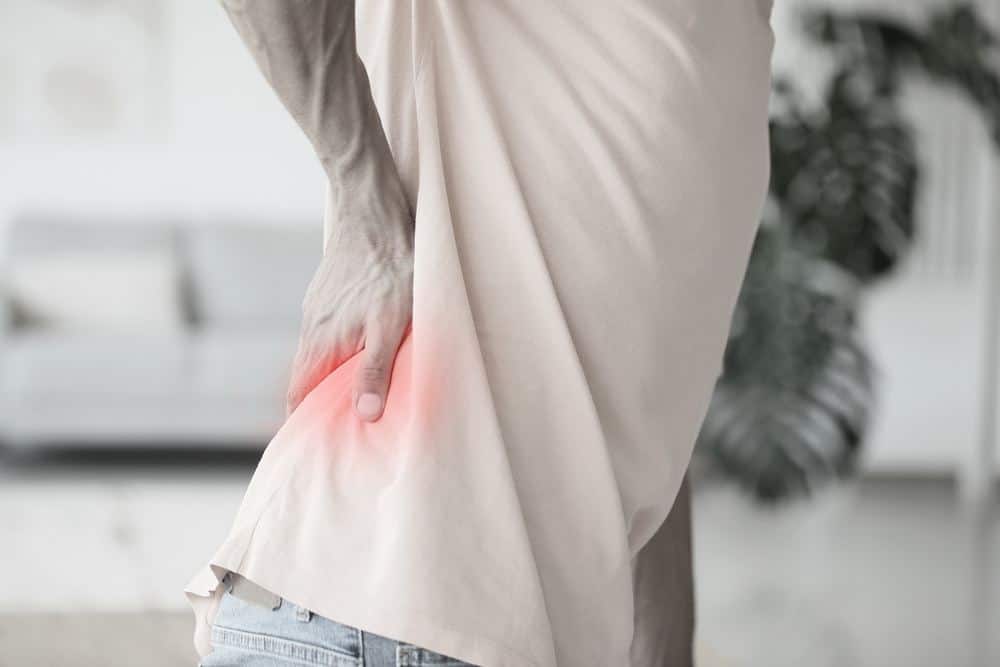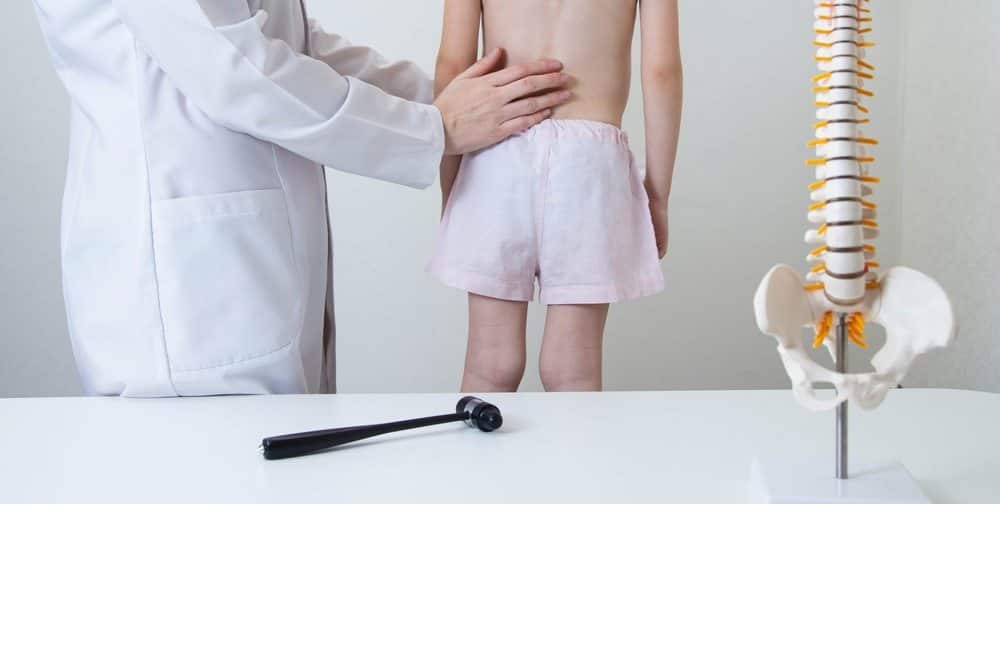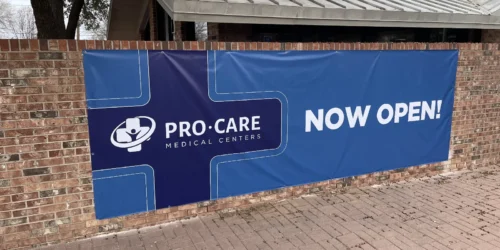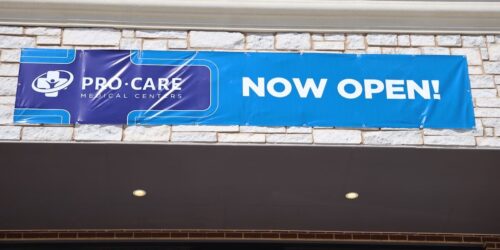The spine is made up of a series of bones, stacked one on top of the other, known as vertebrae. These vertebrae are separated by spinal discs that offer cushion, shock absorption, and support. A healthy spine starts with smaller vertebrae at the top, and they get larger as they move through the middle and lower back. A healthy spine also has a slight curvature to it around the neck and lower back areas. However, too much or too little of a curve to your spine could mean that you are dealing with a spine curvature disorder. Here’s everything you need to know about the different types of spine curvature disorders, including common causes, symptoms, and treatment options.
What Is Spinal Curvature and Why Is It Important?
When viewed from the side, a person’s spine should start at the neck and then have a gentle curve near the shoulders and lower back that looks similar to an elongated letter ‘S’ shape. When viewed from the back, the spine should flow in a straight line from the base of the skull through the lower back. Any deviation from the normal curvature of the spine could indicate a potential issue. A healthy spine depends on these natural curves in the spine to help absorb stress from everyday movements and activities. If the curvature becomes too exaggerated or the spine appears misaligned, it could result in too much pressure or other issues that can impact your whole body.
4 Types of Spine Curvature
There are 4 types of spine curvature, including normal spine curvature and three main types of abnormal spine curvature. Abnormalities of the spine can impact healthy functioning and lead to health problems that require medical attention.
Normal Spine Curvature
The normal spine curvature involves a slight curvature of the vertebrae near the shoulders, torso, and lower back. When standing up straight, a person with normal spine curvature will have an equal distribution of weight and pressure on their spine and a proper posture.
Abnormal Spine Curvatures
Abnormal spine curvatures are divided into three categories based on the type and location of the misalignment or exaggeration. Abnormal spine curvatures result in an unhealthy posture that can impact healthy functioning in the entire body.
Lordosis
Lordosis, commonly referred to as swayback, refers to when the spine curves significantly at the lower back. When standing up straight, a person with lordosis may have a curve to the spine in the lower back that causes the pelvis to tilt and the buttocks to extend outward.
Kyphosis
Kyphosis refers to an abnormally rounded or hunched upper back. A person standing up straight with kyphosis will have rounded shoulders and an exaggerated curve of the spine at the neck and upper back.
Scoliosis
Scoliosis refers to when the vertebrae in the spine are not stacked in a straight line when viewed from the back. Instead, a person with scoliosis will have a slight sideways curvature of the spine that may be S-shaped or C-shaped.
Causes & Symptoms of Spine Curvature Disorders

The causes and symptoms of spine curvature disorders can differ depending on the type of abnormal spine curvature you have. Here are some examples of the different types of spine curvature disorders and their symptoms and causes:
Signs of a Spine Curvature Disorder
Along with obvious signs of abnormal spinal curvature, there are other symptoms you can experience with a spine curvature disorder. The severity of the abnormal spinal curvature will also impact the type and severity of any signs or symptoms. Signs of lordosis include a more pronounced buttocks and a large gap between the lower back and a hard surface when lying on your back. Lordosis can also cause back pain and discomfort, especially with certain movements. Kyphosis can cause a hump to develop in the upper back, and the head will appear bent forward more than the rest of the body. You may also experience fatigue in your back or legs from the redistribution of pressure and weight. Scoliosis signs typically include uneven shoulder blades, uneven hips and waist, and leaning toward one side.
Health Conditions that Can Cause Spine Curvature Disorders
A number of different health disorders can cause spine curvature disorders. Common causes of lordosis include abnormal bone growth, osteoporosis, obesity, or spondylolisthesis. One example of abnormal bone growth is known as achondroplasia and is often associated with dwarfism. Osteoporosis refers to a health condition where bones, including the vertebrae, can become very fragile and more easily broken, leading to compression fractures that impact the healthy curve of the spine. Abnormal vertebrae development in utero and childhood can result in a spine curvature disorder like kyphosis. Other causes of kyphosis include arthritis, spine infections, spine tumors, and poor posture or chronic slouching.
What Are the Treatment Options for Spine Curvature Disorders?

The treatment for your spine curvature disorder will depend on the type and severity of the disorder you have. Here are some examples of potential treatment options for spine curvature disorders for mild, moderate, and severe disorders:
Pain Management
Your spine doctor will want to know whether you are experiencing any pain or discomfort with your spine curvature disorder. There are a variety of treatment options to help you manage your pain from a spine curvature disorder. Mild pain and discomfort from abnormal spine curvature may be treated with chiropractic care of over-the-counter pain medications as needed. For more severe abnormal spinal curvature, a back brace or surgery may be recommended to help reduce your risk for dealing with chronic pain.
Chiropractic Care
Chiropractors offer an all-natural approach to a wide range of issues and disorders, including lordosis, kyphosis, and scoliosis. A chiropractor will work with you to improve your posture while also addressing the root cause of your pain and discomfort. Chiropractic care for spine curve disorders offers a hands-on, drug-free approach to treating your spinal curve disorder. Chiropractic treatment options can include chiropractic adjustments, stretches and exercises to improve your strength, and addressing how the spinal curvature impacts the rest of your body.
Exercise & Rehabilitation
Your treatment and rehabilitation plan for a spinal curvature disorder will likely involve stretches and exercises to help improve your strength, flexibility, and mobility. Weak and loose muscles can lead to an imbalance of strength in the muscles that support your spine and end up making your pain and other symptoms worse. You will do more than just exercise your back muscles; in fact, exercises that stretch your hip flexors, abdomen, and gluteus maximus all help provide your back with better strength and support so it can function properly.
Surgery
In some cases, surgery may be necessary to address severe spine curvature disorders. Your doctor may also recommend bracing before and after surgery to provide support for your spine and prevent the curve from getting worse, especially in children whose bones are still growing. After surgery, you will likely need the support of a quality team of doctors while you recover and rehabilitate.
Visit Pro-Care Medical Centers in Texas for quality treatment and care for a wide variety of health concerns, including spine curvature disorders. Our teams of chiropractors, primary care doctors, and specialists provide comprehensive treatment and recovery support with several locations across San Antonio and Austin. Call or visit us online to schedule your first appointment at a Pro-Care Medical Center near you.



